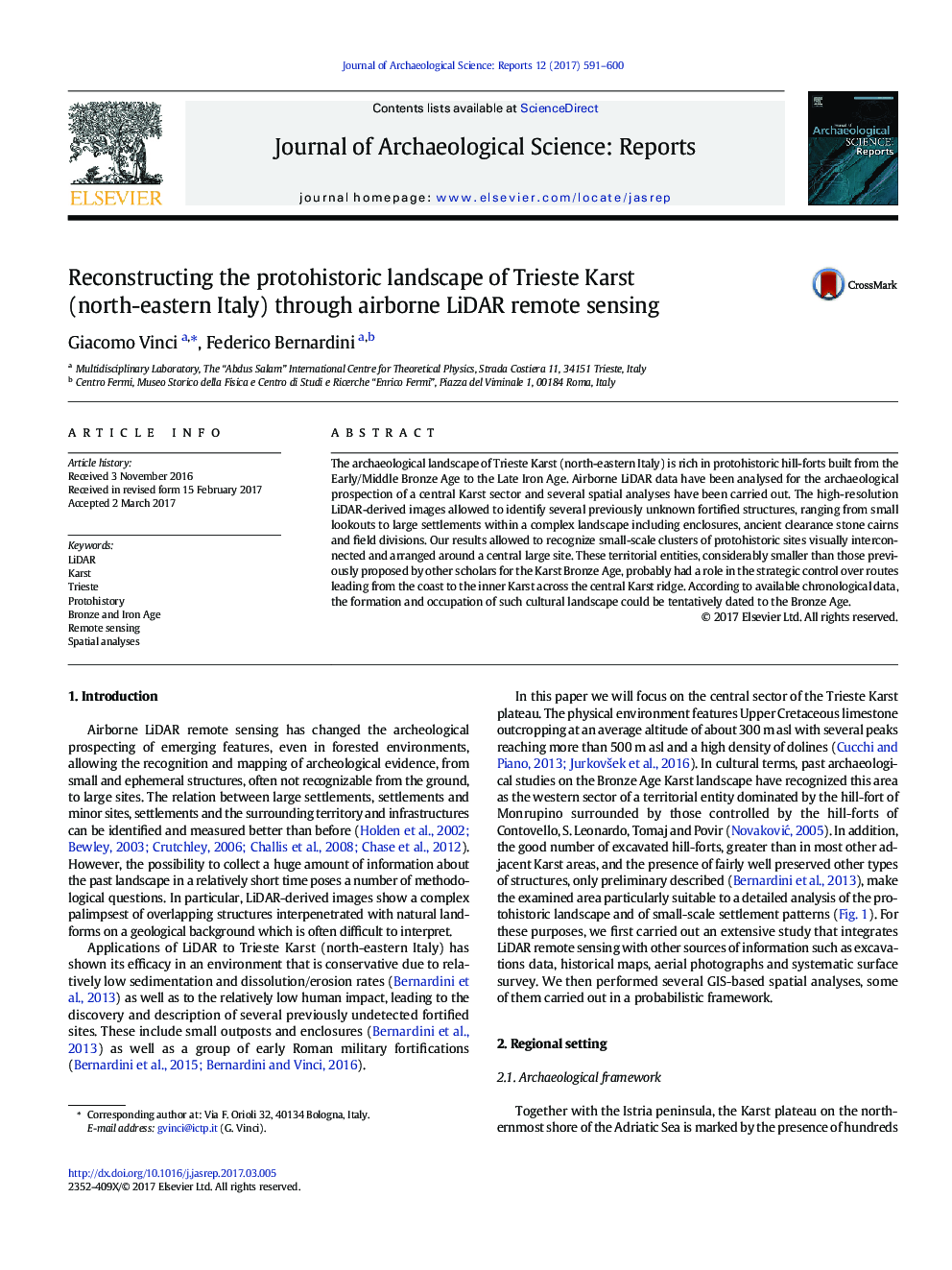| Article ID | Journal | Published Year | Pages | File Type |
|---|---|---|---|---|
| 5112521 | Journal of Archaeological Science: Reports | 2017 | 10 Pages |
Abstract
The archaeological landscape of Trieste Karst (north-eastern Italy) is rich in protohistoric hill-forts built from the Early/Middle Bronze Age to the Late Iron Age. Airborne LiDAR data have been analysed for the archaeological prospection of a central Karst sector and several spatial analyses have been carried out. The high-resolution LiDAR-derived images allowed to identify several previously unknown fortified structures, ranging from small lookouts to large settlements within a complex landscape including enclosures, ancient clearance stone cairns and field divisions. Our results allowed to recognize small-scale clusters of protohistoric sites visually interconnected and arranged around a central large site. These territorial entities, considerably smaller than those previously proposed by other scholars for the Karst Bronze Age, probably had a role in the strategic control over routes leading from the coast to the inner Karst across the central Karst ridge. According to available chronological data, the formation and occupation of such cultural landscape could be tentatively dated to the Bronze Age.
Related Topics
Social Sciences and Humanities
Arts and Humanities
History
Authors
Giacomo Vinci, Federico Bernardini,
